類方法

class People:
country="China"
# 類方法 用classmethod來修飾
@classmethod #通過標識符來表示下方方法為類方法
def get_country(cls): #習慣性使用cls
return cls.country #訪問類屬性
pass
pass
print(People.get_country()) #通過類對象去引用
p=People()
print("實例對象訪問%s"%p.get_country()) #通過實例對象去訪問
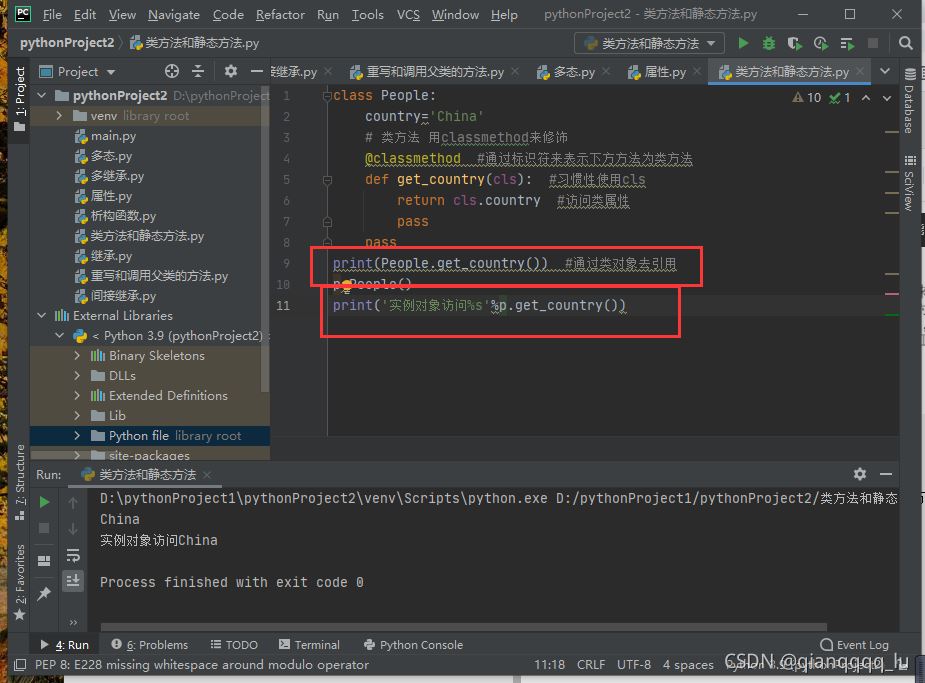
class People:
country="China"
# 類方法 用classmethod來修飾
@classmethod #通過標識符來表示下方方法為類方法
def get_country(cls): #習慣性使用cls
return cls.country #訪問類屬性
pass
@classmethod
def change_country(cls,data):
cls.country=data #修改類屬性的值在類方法中
pass
print(People.get_country()) #通過類對象去引用
p=People()
print("實例對象訪問%s"%p.get_country())
People.change_country("英")
print(People.get_country())
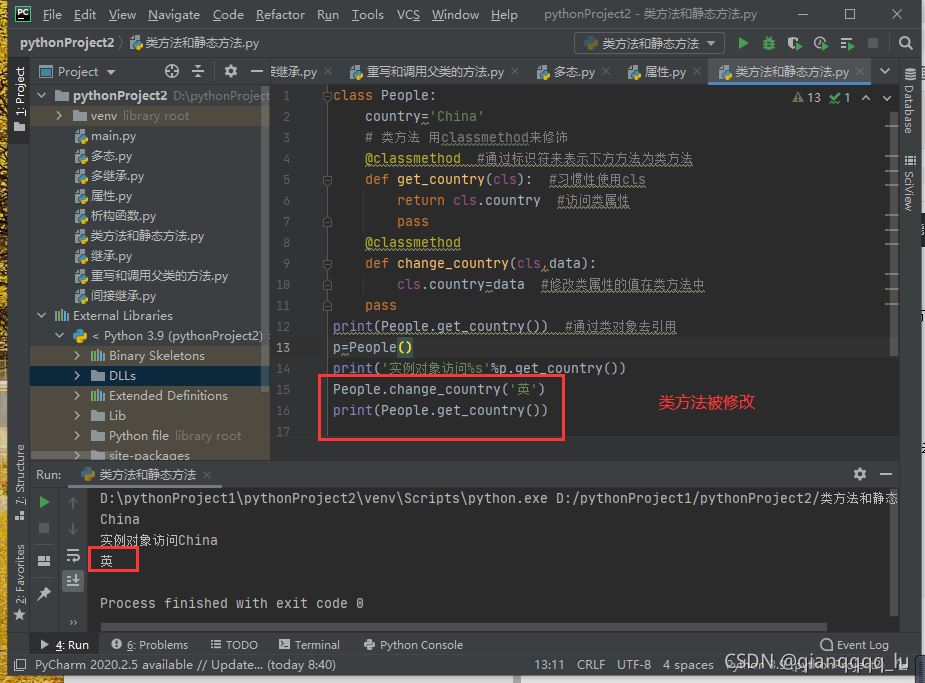
靜態方法
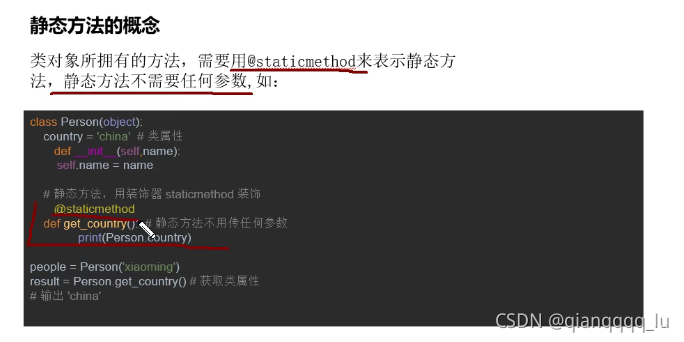
class People:
country="China"
# 類方法 用classmethod來修飾
@classmethod #通過標識符來表示下方方法為類方法
def get_country(cls): #習慣性使用cls
return cls.country #訪問類屬性
pass
@classmethod
def change_country(cls,data):
cls.country=data #修改類屬性的值在類方法中
pass
@staticmethod
def getData(): #無需傳參數
return People.country
pass
print(People.getData()) #可以訪問
# print(People.get_country()) #通過類對象去引用
p=People()
print(People.getData()) #可以訪問 注意 一般情況下 我們不會通過實例對象去訪問靜態方法
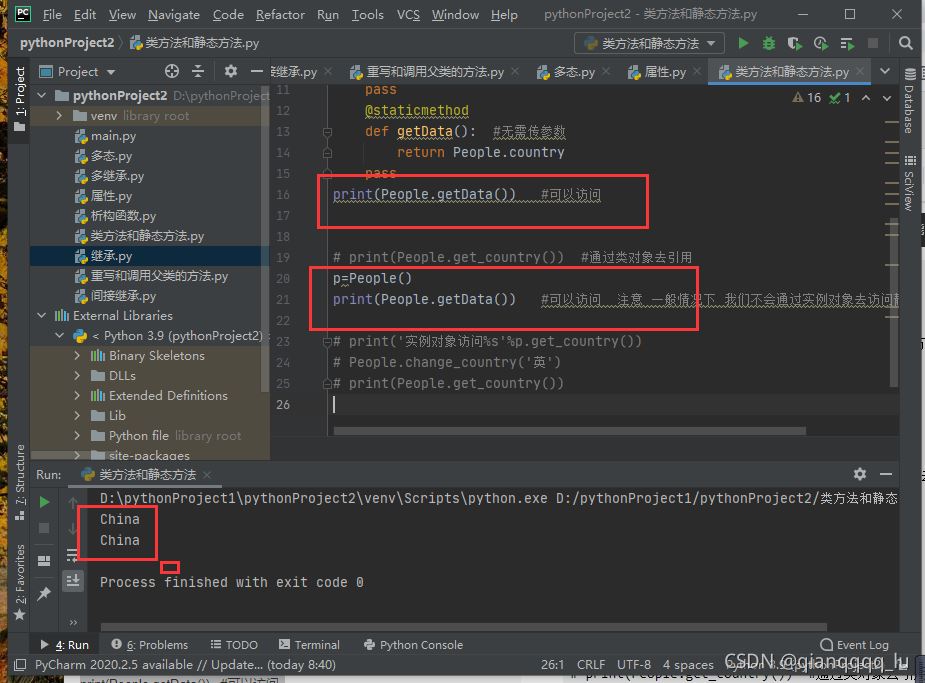
為什么要使用靜態方法呢?
由于靜態方法主要來存放邏輯性的代碼 本身和類以及實例對象沒有交互
也就是說 在靜態方法中 不會涉及到類中方法和屬性的操作
數據資源能夠得到有效的充分利用
# demo 返回當前的系統時間
import time #引入時間模塊
class TimeTest:
def __init__(self,hour,min,second):
self.hour=hour
self.min=min
self.second=second
@staticmethod #直接定義為靜態方法 不需要實例屬性
def showtime():
return time.strftime("%H:%M:%S",time.localtime())
pass
print(TimeTest.showtime())
t=TimeTest(2,10,15)
print(t.showtime()) #無必要 直接使用靜態方法 輸出仍是導入時間
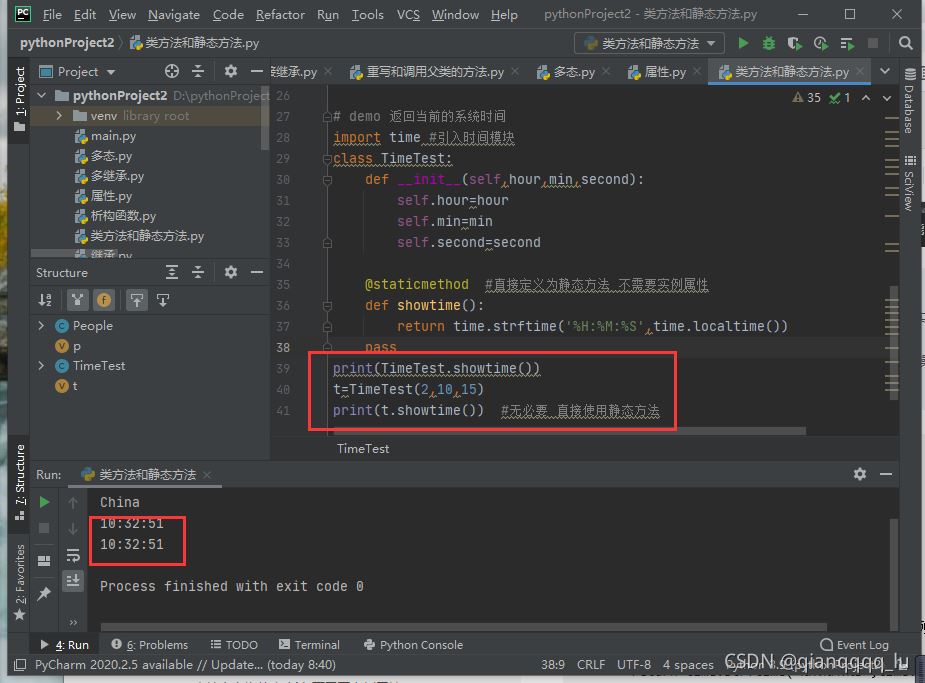
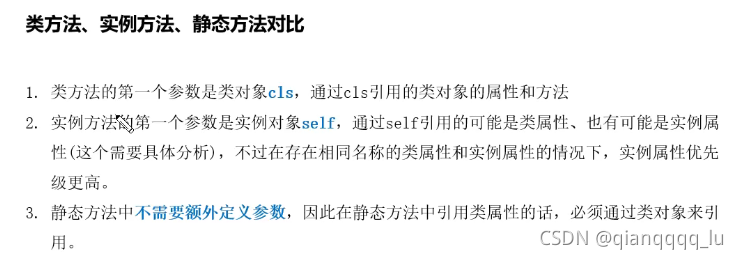
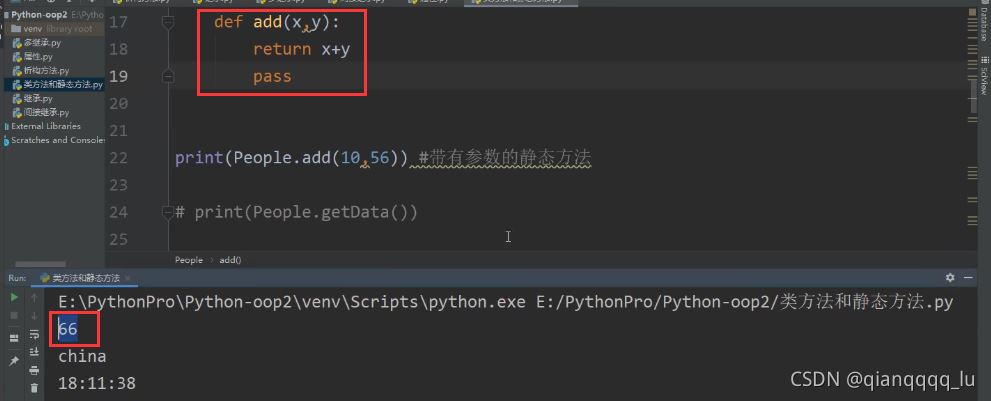

復習
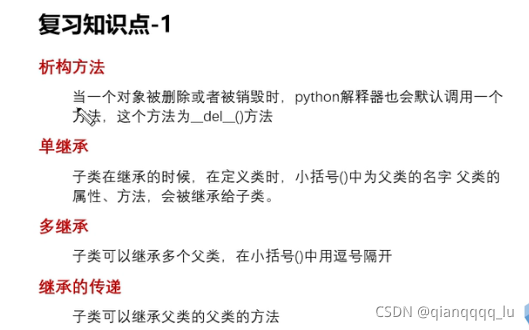
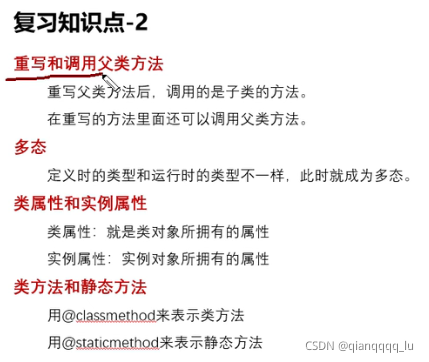
總結
本篇文章就到這里了,希望能夠給你帶來幫助,也希望您能夠多多關注服務器之家的更多內容!
原文鏈接:https://blog.csdn.net/weixin_44632711/article/details/120697745










